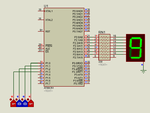panda1234
Full Member level 2

Hi,
I'm beginner with 8051 assembly code i want to write a program that read 4 input and show its hexadecimal value on 7 seg and the code should be in infinite loop.
thanks
I'm beginner with 8051 assembly code i want to write a program that read 4 input and show its hexadecimal value on 7 seg and the code should be in infinite loop.
thanks



